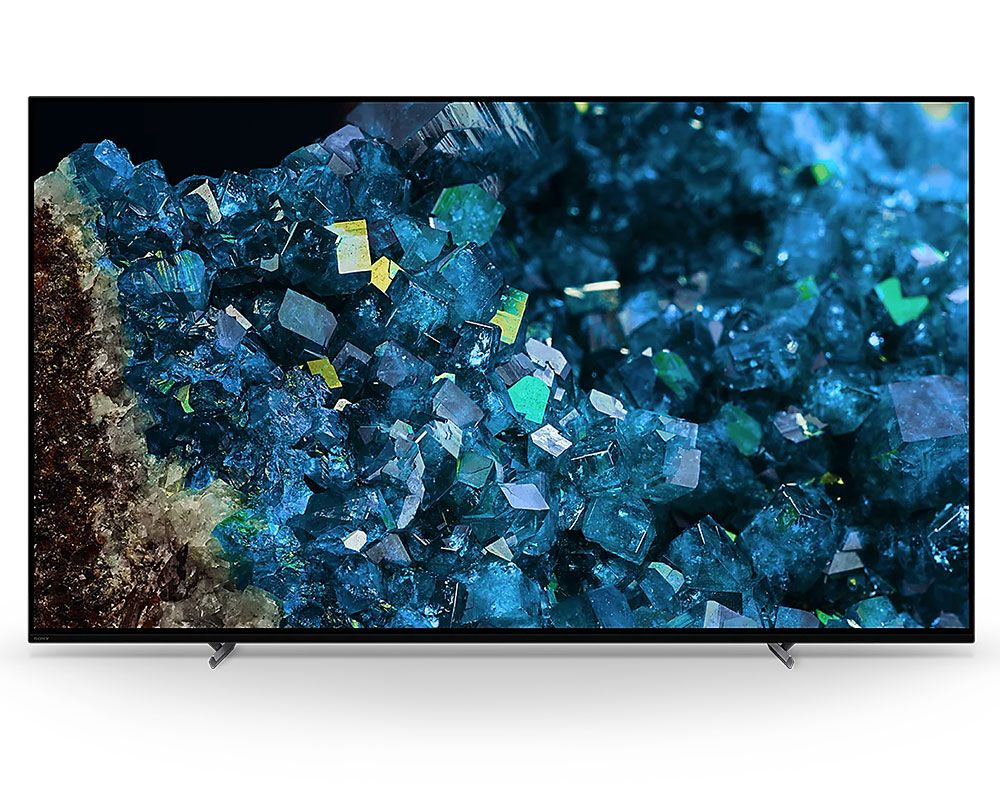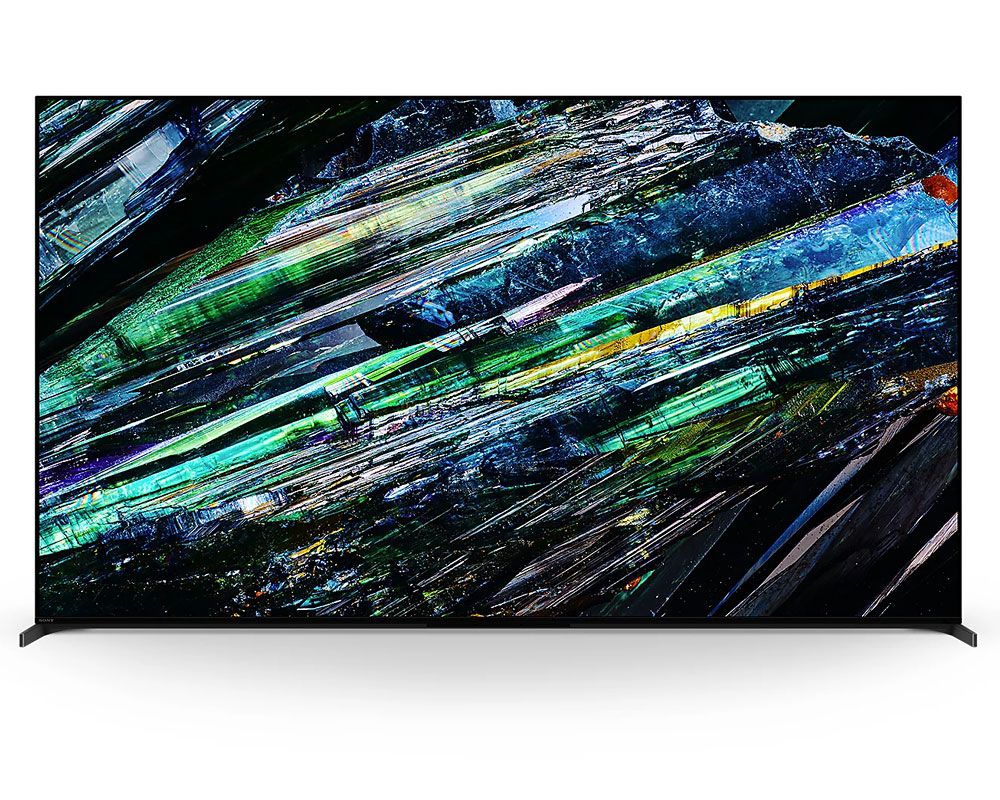The ultimate guide to OLED TVs: Benefits, comparisons, and how the technology works
If you're in the market for a new TV, you've likely encountered the term "OLED." Known for delivering unparalleled picture quality, OLED TVs have quickly become the gold standard for home entertainment. But what exactly is an OLED TV? How does it compare to other technologies like QLED? And, most importantly, is it worth the investment?
Here, we explore everything you need to know about OLED TVs, helping you make an informed decision.
- What is an OLED TV?
- Benefits of OLED TVs
- OLED vs QLED TVs
- Is an OLED TV worth it?
- Frequently asked questions
Learn what makes OLED TVs revolutionary and how they differ from traditional TV technologies.
Explore the advantages of OLED TVs, from true blacks to sleek designs, and why they’re worth the hype.
Compare OLED and QLED technologies to understand which one is better suited to your needs.
Find out whether investing in an OLED TV is the right choice for your home entertainment.
Get answers to the most common questions about OLED TVs, from lifespan to gaming performance.
What is OLED?
OLED stands for Organic Light-Emitting Diode. Unlike traditional LED TVs, which rely on a backlight to illuminate the screen, OLED panels use organic compounds that emit light when an electric current passes through them. This means that each pixel in an OLED display is self-illuminating, offering remarkable control over brightness and colour.
Read our guide What is an OLED TV? to find out more.
When a pixel is off, it produces true black, creating a stunning contrast ratio. This self-emissive technology eliminates the need for backlighting, resulting in thinner, lighter screens with a more vibrant and accurate colour palette.
What are the benefits of OLED TVs?
1. Unparalleled picture quality
- True black levels: OLED’s ability to turn off individual pixels ensures deep blacks that enhance overall picture quality.
- Infinite contrast ratio: With no backlight to bleed into dark areas, OLED TVs deliver exceptional contrast, making images pop.
- Accurate colours: OLED displays produce incredibly precise and vibrant colours, perfect for HDR content.
2. Wide viewing angles
Unlike LED and QLED TVs, which can suffer from colour and contrast degradation when viewed off-centre, OLED TVs maintain consistent picture quality from almost any angle.
3. Ultra-thin design
OLED panels are inherently slimmer and more lightweight, allowing for sleeker designs that blend seamlessly into modern homes. In particular, the Sony 65-inch XR-65A80L offers an exceptionally attractive and slim design, making it a perfect addition to your living room.
4. Faster response times
Gamers and sports enthusiasts will appreciate OLED’s near-instantaneous response times, reducing motion blur and providing a smoother experience. A standout model for gaming is the Sony XR-77A80LU, offering stunning visuals and highly responsive, smooth game play.

5. Energy efficiency
Since OLED pixels emit their own light, they consume less power when displaying darker scenes.
Find out more about the benefits of OLED TVs here.
OLED vs. QLED: Key differences
While OLED has set the standard for premium TVs, QLED (Quantum Dot LED) is a competing technology that also offers impressive features. Here’s how they stack up:
Brightness
QLED TVs use a backlight combined with quantum dots to achieve higher brightness levels. This makes them ideal for well-lit rooms. OLED TVs, on the other hand, excel in dimmer environments, where their contrast and black levels shine.
Colour accuracy
Both technologies deliver excellent colour reproduction, but OLED’s pixel-level control provides more precise colours, especially in HDR content.
Black levels and contrast
OLED wins hands-down when it comes to black levels and contrast. QLED TVs, reliant on backlighting, can experience light bleed, reducing their ability to produce true blacks.
Viewing angles
OLED offers superior viewing angles compared to QLED. If you’re often watching TV from the side, OLED is the better choice.
Longevity and burn-In
QLED TVs have a longer lifespan as they don’t suffer from image retention or burn-in, which can occur with OLED panels if static images are displayed for extended periods. However, modern OLED TVs feature technologies to minimise this risk.
Price
QLED TVs are generally more affordable than OLED TVs, making them a budget-friendly option for those who prioritise brightness and longevity over picture perfection.
Read our complete guide to QLED vs OLED TVs here.
Shop the Sony A95L OLED
Is an OLED TV worth the cost?
OLED TVs typically come with a higher price tag than LED or QLED models, but their superior performance justifies the investment for many buyers. If you prioritise exceptional picture quality, sleek design, and a premium viewing experience, an OLED TV is absolutely worth considering.
However, if you watch TV primarily in brightly lit rooms or are on a tight budget, a high-end QLED TV might offer better value for your needs. Read our guide Is an OLED TV worth it ? to find out more.
Frequently asked questions
What is the lifespan of an OLED TV?
Modern OLED TVs are designed to last approximately 100,000 hours of viewing, equivalent to over a decade of regular use.
Do OLED TVs suffer from burn-in?
While burn-in can occur with prolonged display of static images, this issue is rare in modern OLED TVs thanks to advanced pixel-shifting technologies.
Are OLED TVs good for gaming?
Yes, OLED TVs are ideal for gaming due to their fast response times, low input lag, and vibrant HDR capabilities.
How does OLED handle HDR content?
OLED’s pixel-level control allows for stunning HDR performance, with brighter highlights and more detailed shadows.
Can I mount an OLED TV on the wall?
Yes, OLED TVs’ slim and lightweight design makes them perfect for wall mounting.
Are OLED TVs energy efficient?
OLED TVs consume less power when displaying darker scenes but may use more energy for bright, vibrant content.


